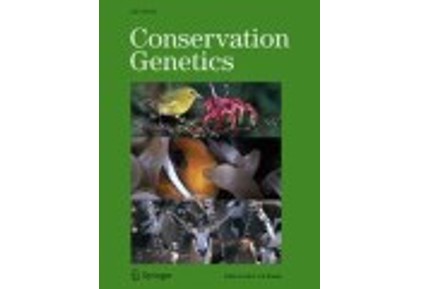Published in: Conservation Genetics
Date published: 08 January 2015
Authors: Catherine E. Grueber1,5, Gabrielle J. Knafler1, Tania M. King1, Alistair M. Senior2, Stefanie Grosser1, Bruce Robertson1, Kerry A. Weston1, Patricia Brekke3, Christian L. W. Harris4, Ian G. Jamieson1
- Allan Wilson Centre for Molecular Ecology and Evolution, Department of Zoology, University of Otago, Dunedin, New Zealand.
- Charles Perkins Centre and School of Biological Sciences, University of Sydney, Sydney, NSW, Australia.
- Institute of Zoology, Zoological Society of London, London, United Kingdom.
- Department of Biochemistry, University of Otago, Dunedin, New Zealand.
- Faculty of Veterinary Science, University of Sydney, Sydney, NSW, 2006, Australia.
Abstract:
Measuring individual-level heterozygosity in threatened species is one approach to understanding and mitigating losses of genetic diversity and the role of inbreeding depression in those populations. In many conservation contexts, this goal is approached by assaying levels of microsatellite diversity, and inference is often extended to functional genomic regions. Our study quantifies diversity of innate immunity toll-like receptor (TLR) genes in 10 threatened New Zealand birds across four avian orders, with an average of 20.1 individuals and 6.2 TLR loci (sequences averaging 850Â bp in length) per species. We provide detailed TLR diversity statistics for these 10 species, which showed more evidence for genetic drift than balancing selection at TLR loci, with two possible exceptions (TLR1LA for hihi and TLR5 for kokako). Our observations also support a possible gene-duplication of TLR7 in rock wren, indicating that a TLR7 duplication previously observed in other passerines may have occurred early in the divergence of this order. In addition to these analyses of population-level TLR sequence diversity, we used an average of 14.6 polymorphic microsatellite loci per species to study, for the first time, the relationship between microsatellite internal relatedness (a measure of individual homozygosity) and TLR heterozygosity. There was no relationship between microsatellite and TLR heterozygosity of individuals within species, suggesting that the predictive power of microsatellites to evaluate functional diversity is poor, and highlighting the value of adding data from putatively functional genomic regions, such as TLRs, in the study of genetic diversity of threatened species. Overall this study provides valuable data for comparison with more widespread species, and facilitates research into the importance of TLR diversity in natural populations of conservation concern.
Paper details available here:
